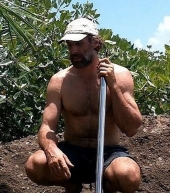




Jennifer Wadsworth wrote:
So my focus right now falls out like this:
--10% about me and my own sustainability (this was more at one point but I have several good systems in place, so now it's less - it's been an evolving process)
--30% about my immediate neighborhood and surrounding 'hoods (organizing classes, talks, hands-on opportunities, cleanup events, social gatherings)
--20% about my city - working to change policy, etc
--40% about the broad landscape in which I live - working to change policy (in talks with the former mayor about proposed desalinization plants for Arizona/Mexico, care of wild lands w/Sierra Club, restoring riparian areas, etc)
For me, permaculture HAS to go beyond my property by necessity.
What do others think?
Jaan Designs-http://www.jaandesigns.ca
Raindrop harvesting-http://raindropharvesting.ca




Bill Mollison wrote:The sad reality is that we are in danger of perishing from our own stupidity and lack of personal responsibility to life.
Bill Mllison wrote: To accumulate wealth, power, or land beyond one's needs in a limited world is to be truly immoral, be it as an individual, an institution, or a nation-state.
Bill Mollison wrote: Cooperation, not competition, is the very basis of existing life systems and of future survival.
Dave's SKIP BB's / Welcome to Permies! / Permaculture Resources / Dave's Boot Adventures & Longview Projects


















Dave's SKIP BB's / Welcome to Permies! / Permaculture Resources / Dave's Boot Adventures & Longview Projects


















Dave's SKIP BB's / Welcome to Permies! / Permaculture Resources / Dave's Boot Adventures & Longview Projects














 1
1




 1
1










